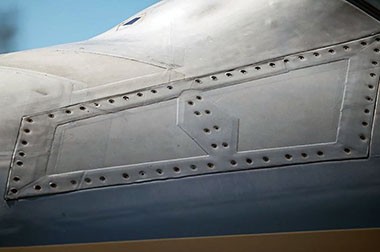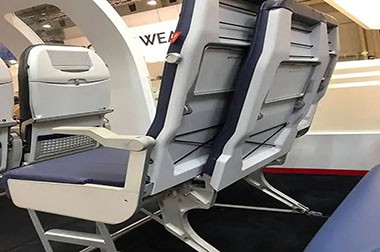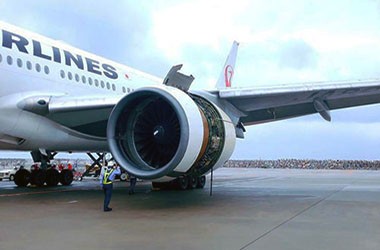2024 and 7075 Airplane Aluminum Alloys
7075 aluminum alloy and 2024 aluminum alloy are both commonly used aerospace materials, featuring excellent mechanical properties and good machinability.
Both alloys have their pros and cons; 7075 aluminum alloy performs better in terms of strength, while 2024 aluminum alloy has advantages in machining and welding.
Below is a comparison table of 2024 aluminum alloy and 7075 aluminum alloy:
| Property/Parameter | 2024 Aluminum Alloy | 7075 Aluminum Alloy |
| Strength | High, superior to general aluminum alloys, good fatigue resistance | Very high, one of the strongest aluminum alloys |
| Toughness | Fair | Poor, prone to stress concentration issues |
| Weldability | Fair, suitable for welding | Poor, difficult to weld |
| Corrosion Resistance | Relatively poor, requires protection | Requires additional protection, high risk of corrosion in humid environments |
| Heat Treatment State | T3, T4, T351, T6 | T6, T73, T76 |
| Forming Method | Extrusion, forging, rolling | Extrusion, forging, machining |
| Aerospace Applications | Aircraft fuselage, wing beams, wing skins | Wings, fuselage frames, landing gear components |
Properties of 2024 and 7075 Airplane Aluminum Alloys
Properties of 2024 Aluminum Alloy
- Strength: 2024 aluminum alloy has excellent strength, generally exhibiting better fatigue resistance than 7075 aluminum alloy.
- Weldability: Not as good as some other aluminum alloys, but can be welded with appropriate welding techniques.
- Corrosion Resistance: Relatively poor, usually requiring coatings or other protective measures to improve corrosion resistance.
- Machinability: Easy to machine, suitable for riveting and welding processes, and ideal for manufacturing large structural components.
Properties of 7075 Aluminum Alloy
- Strength: 7075 aluminum alloy is one of the high-strength aluminum alloys, with very excellent mechanical properties, especially after heat treatment.
- Toughness: Compared to other high-strength aluminum alloys, 7075 aluminum alloy has poor toughness and is prone to stress concentration issues.
- Corrosion Resistance: Typically requires additional protective measures to enhance corrosion resistance, especially in wet environments.
- Machinability: Optimal performance can be achieved through heat treatment (T6 and other states), suitable for machining complex structures.
Chemical Composition of 2024 and 7075 Airplane Aluminum Alloys
The composition of 2024 alloy: the main component is aluminum (about 90%), along with copper (3.8%-4.9%), and small amounts of manganese, magnesium, and silicon.
Below is a table displaying the chemical composition of 2024 aluminum alloy:
| Element | Content Range |
| Copper (Cu) | 3.8% - 4.9% |
| Zinc (Zn) | 0.25% max |
| Magnesium (Mg) | 1.2% - 1.8% |
| Manganese (Mn) | 0.3% - 0.9% |
| Silicon (Si) | 0.5% max |
| Iron (Fe) | 0.5% max |
| Other Elements | Each not exceeding 0.05%, total not exceeding 0.15% |
7075 alloy composition: The main component is aluminum (approximately 90%), followed by zinc (5.1%-6.1%), as well as magnesium, copper, and small amounts of titanium.
Below is a table displaying the chemical composition of 7075 aluminum alloy:
| Element | Content Range |
| Zinc (Zn) | 5.1% - 6.1% |
| Magnesium (Mg) | 2.1% - 2.9% |
| Copper (Cu) | 1.2% - 2.0% |
| Chromium (Cr) | 0.18% - 0.28% |
| Silicon (Si) | 0.40% max |
| Iron (Fe) | 0.50% max |
| Other Elements | Each not exceeding 0.05%, total not exceeding 0.15% |
Machining Methods for 2024 and 7075 Airplane Aluminum Alloys
Machining Methods for 2024 Airplane Aluminum Alloys
- Heat Treatment: 2024 aluminum alloy is typically processed using heat treatment states such as T3, T4, T351, and T6.
- Forming Methods: Can be manufactured into various product forms through processes such as extrusion, forging, and rolling, including sheets, profiles, and tubes.
Machining Methods for 7075 Airplane Aluminum Alloys
- Heat Treatment: Common states include T6, T73, T76, which can significantly enhance strength after heat treatment.
- Forming Methods: Can be produced into various shapes and sizes of aluminum materials through methods such as extrusion, forging, and machining.
Below is a comparison table of the heat treatment and forming methods for 2024 aluminum alloy and 7075 aluminum alloy:
| Property/Parameter | 2024 Aluminum Alloy | 7075 Aluminum Alloy |
| Heat Treatment State | T3, T4, T351, T6 | T6, T73, T76 |
| Heat Treatment Effect | Increases strength, improves mechanical properties | Significantly increases strength, enhances overall performance |
| Forming Methods | Extrusion, forging, rolling, suitable for various product forms | Extrusion, forging, machining, preparing aluminum materials in various shapes and sizes |
| Available Product Forms | Sheets, profiles, tubes | Various shapes and sizes |
Aerospace Applications of 2024 and 7075 Aluminum Alloys
Applications of 2024 Airplane Aluminum Alloys
- Aircraft Structure: Used in load-bearing structures such as aircraft fuselage, wing beams, and wing skins.
- Military Aviation: Widely used in high-strength demand aircraft such as fighter jets and transport planes.
Applications of 7075 Airplane Aluminum Alloys
- Structural Components: 7075 aluminum alloy is widely used in aerospace structural components, such as wings, fuselage frames, and landing gear components.
- Military Aviation: Particularly suitable for military aircraft requiring high strength and lightweight.








